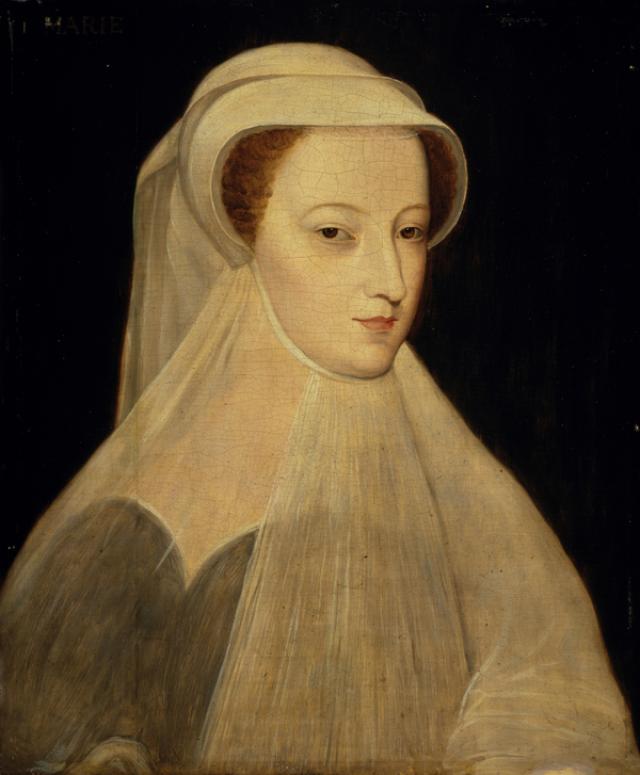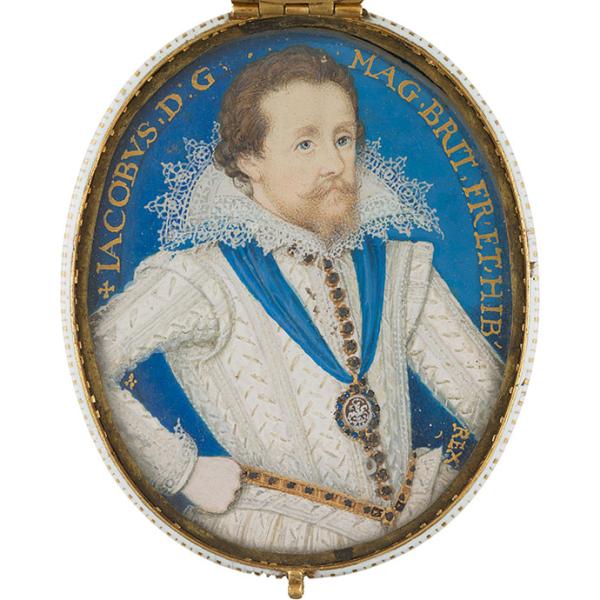Mary, Queen of Scots is often considered one of the most romantic and tragic figures in Scottish history and her enduring story and image continue to fascinate. Today a huge number of images of Mary are in circulation, with many dating to the eighteenth and nineteenth centuries when both her life and appearance were highly romanticised.
In fact, relatively few portraits of Mary which were made during her lifetime survive. Contemporary accounts record that she was tall, over 6ft, and striking in appearance, with auburn hair and brown eyes.
Explore ten objects which depict Mary, members of her family, and record or commemorate key moments from her life.
Mary of Guise was the mother of Mary, Queen of Scots.
The Guise family was immensely powerful in France and this portrait can be seen as part of their efforts to promote their interests.
It was painted to secure an advantageous second marriage for Mary of Guise, who had recently been widowed.
She was sent to Scotland to become the second wife of James V, as a dynastic pawn to help maintain the ‘Auld Alliance’ between the two countries.
After the king’s death, she fought for her daughter’s dynastic rights and to keep Scotland Catholic and pro-French.
Despite their small size, Cornille de Lyon’s portraits offer an insight to the sitter’s personality: Mary of Guise was famed for her wit and charm.
James V became King of Scotland at seventeen months old when his father, James IV, was killed at the battle of Flodden.
During his reign James was eager that the Scottish court should reflect the culturally vibrant Renaissance courts of Europe.
James’s second wife, Mary of Guise, was the mother of his only legitimate daughter, Mary, who, following her father’s death became Queen of Scots at just six days old.
This painting is one in a series of portraits of the Kings of Scotland.
In the late sixteenth century it became fashionable to commission series of portraits of rulers.
It is possible that this example was created as part of the celebrations for James VI’s spectacular entry into Edinburgh in 1579.
François II of France (1544-1560) and Mary, Queen of Scots (1542-1587)
François was the Dauphin of France and Mary’s first husband. They were married in a spectacular ceremony at the Cathedral of Notre Dame, Paris on 24 April 1558 – Mary was 15 years old and François 14. The following year François became King of France and Mary, his queen consort. She is shown here wearing an embroidered court gown with slashed sleeves, a beaded French hood and holding an elaborate fan.
These engravings are from a larger series of prints, which depicted 39 European royals. Couples were engraved on, and printed from one plate, although few survive together. It is likely that these prints were made around the time of Mary and Francois’ wedding.

Mary, Queen of Scots (1542-1587)
Mary I of Scotland, known as Mary, Queen of Scots (1542-1587) was sent to France in 1548, for her safekeeping.
Raised and educated at court, she later married the Dauphin, the heir to the French throne, who became François II in 1559.
This portrait shows her aged eighteen, in the white mourning attire of the French court. The original was painted around 1560-1 when Mary was in mourning for her father-in-law Henri II, her mother Mary of Guise, and her husband - they had all died within eighteen months of each other.
The poet Pierre de Ronsard described seeing Mary in these clothes, 'like a sacred image... your long fine mourning veil billows fold upon fold like a sail on the breeze'. Soon after the original of this portrait was painted, Mary returned to Scotland, a Catholic monarch in a newly Protestant nation.
Henry Stuart, Lord Darnley (1545-1567)
Darnley was the great-grandson of Henry VII and a descendant of James II of Scotland, and therefore an heir to both the Scottish and English thrones. In 1565 he married his cousin Mary, Queen of Scots.
Flattering her ambition, Mary made Darnley King of Scots, but he was spoilt, arrogant and unpredictable, and soon proved to be a liability as a royal consort.
His involvement in the murder of the queen’s secretary, David Rizzio, at the Palace of Holyroodhouse, proved to be the breaking point in their marriage. Despite Mary giving birth to their son and heir, James – later James VI and I – in 1566, the couple’s marriage continued to struggle.
Only nine months later the house, in Edinburgh, where Darnley was staying was blown up and his body was found in the grounds. It soon became apparent that he had been strangled and suspicion fell on the Earl of Bothwell, his supporters and Mary herself.

James VI became king when he was thirteen months old, following the forced abdication of his mother Mary, Queen of Scots.
Here the Netherlandish artist Arnold Bronckorst depicts him, as was the usual practice, like an adult.
He is wearing a fashionable black doublet and hat, and holding a sparrow-hawk on his gloved left hand.
Hawking was an outdoor pursuit appropriate to his age and royal status.
Mary, Queen of Scots (1542-1587) and James VI (1566-1625)
This illustration of Mary and her son James, later King James VI and I, is a book plate and appeared in Bishop John Leslie’s De origine moribus, et rebus gestis Scotorum or The History of Scotland, which was published in Rome in 1578.
The volume featured genealogies of the kings and queens of Scotland and this image reinforces the lineage of the Stuarts.
Leslie was a long-standing supporter of Mary and so it is likely that he would have wanted the portraits in the publication to be close representations of the sitters.
Below the portraits are the royal arms of Scotland which feature the lion rampant at the centre.
This exquisite pair of miniatures was painted in 1566, the year in which the sitters were married. Their marriage, celebrated at the court of Mary, Queen of Scots, crossed religious boundaries. For Bothwell, a determined Protestant, it brought much needed funds. For Lady Jean, the daughter of George Gordon, 4th Earl of Huntly, it helped the political rehabilitation of her Catholic family. The countess, described as ‘a cool, detached character warmed by a masculine intelligence’, divorced Bothwell a year after their wedding, following an affair the earl had with one of her servants.
Bothwell became famous as the third husband of Mary, Queen of Scots, whom he married in 1567, three months after the murder of her second husband, Lord Darnley, despite being acquitted of this crime only the month before.
Mary, Queen of Scots (1542-1587)
After returning from France, Mary ruled in Scotland for only six years. Following a rebellion, she was forced to abdicate and fled to England.
Mary was retained and held captive for nearly twenty years before being executed for plotting to murder her cousin, Elizabeth I.
This portrait was not painted from life, but is a version after a sixteenth-century portrait.
The date 1578 marked the ten years that Mary had been held in captivity and the original was probably commissioned by one of her supporters.
The inscription reminds us of Mary’s lineage, and the crusifixes reiterate her Catholic faith.
One crucifix shows the biblical story of Susanna and the Elders, in which an innocent woman was saved from being put to death.
The execution of Mary, Queen of Scots
Mary’s life ended on the scaffold at Fotheringhay Castle, near Northampton, on 8 February 1587. After nineteen years in captivity in England, she had been tried and condemned to death for plotting the assassination of Queen Elizabeth I. This watercolour records the moment before the executioner dropped his axe,
To the left of the scaffold are two of Mary’s attendants, Jane Kennedy and Elizabeth Curle, who stand weeping. On the far left of the main scene men are burning Mary’s clothes; this was done to prevent her supporters from keeping them as relics.
The buildings in the background and the costume are Dutch in style, as the drawing was created for an album of historical prints and drawings compiled by Willem Luytsz van Kittensteyn, a Delft magistrate, in 1613.
By Kate Anderson, Senior Curator, 16th & 17th Century Collections, 15 January 2019
Discover more
This interactive story from Google Arts & Culture explores Mary's life through artworks from your national collection and other collections from around the world.











